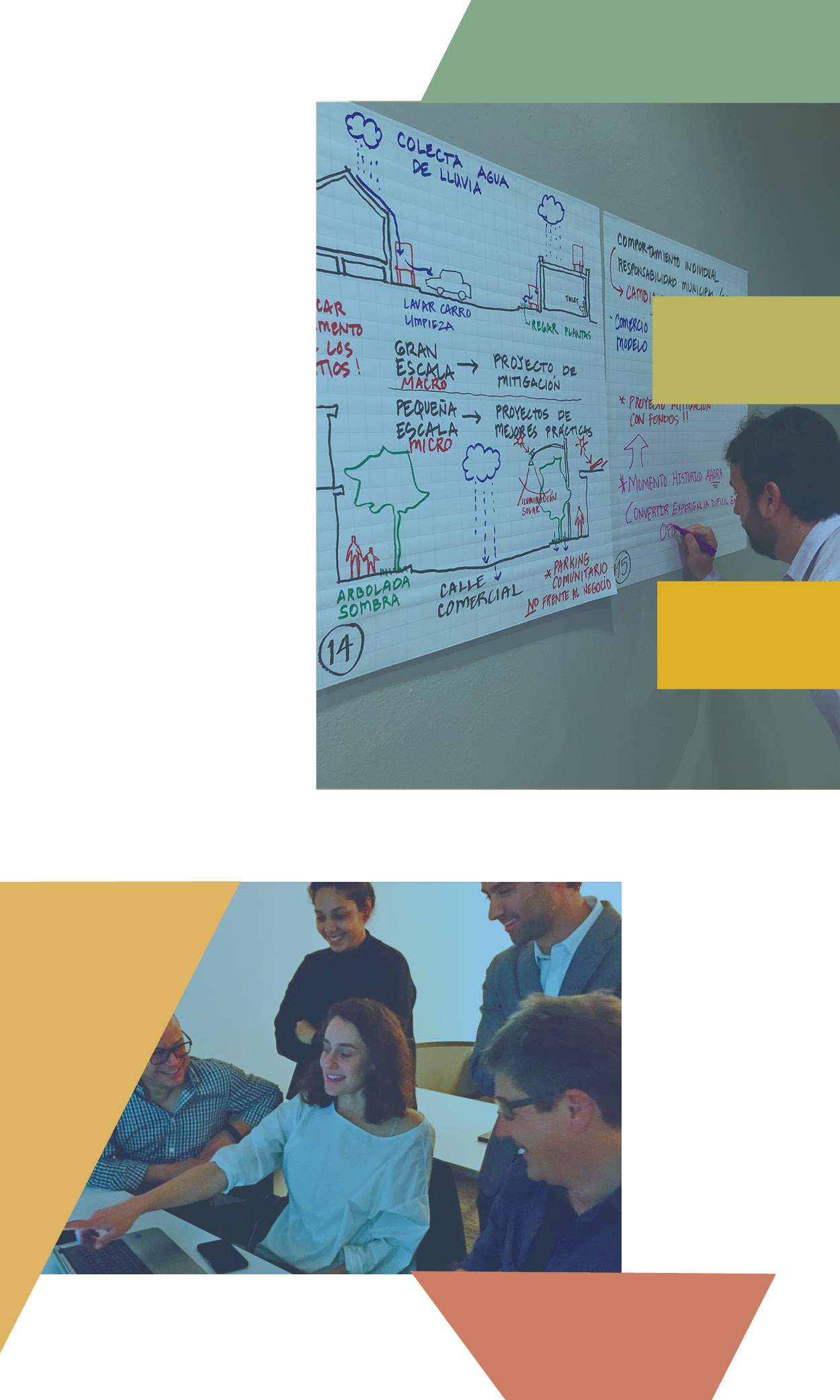
How we work —
Our process is immersive, engaged, data-driven, imaginative, and disruptive. We:
Tackle real-world problems.
We take a holistic approach, prioritizing the human experience, resource circularity, performance optimization, construction innovation, and digital innovation.
Let expertise lead the way.
We build strategic partnerships to assemble the best team for the problem.
Believe everything is connected.
We immerse ourselves in the problem and consider multiple solutions through a whole-system-thinking approach.
Focus on action.
We take into account short-, mid-, and long-term planning and implementation.
Know there’s always a better way.
We reiterate concepts and ideas to continuously enhance our solutions.
Empower others.
We position community leaders to own transformative outcomes with authenticity.
Transform communities, sustainably.
We educate each other and the community for lasting positive impact.
Top Left: resilientSEE collaborative workshop with MIT Urban Risk Lab, the Toa Baja Muncipality and Environmental Protection Agency of Puerto Rico.
Bottom Left: Workshop testing the Hazel modeling tool for the Latrobe Drylands Resilieance Initative.

